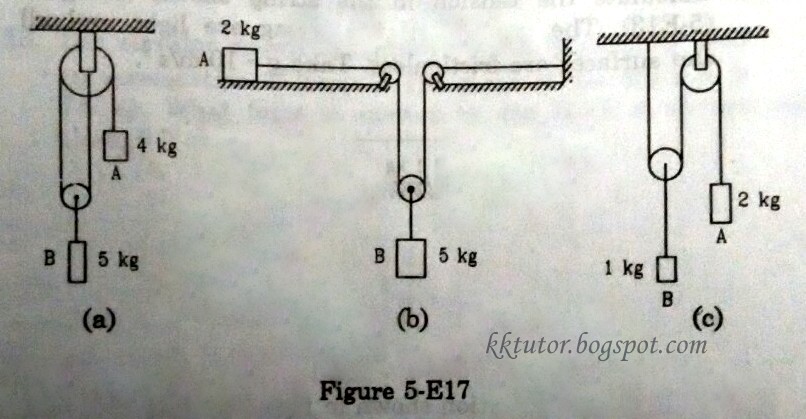CBSE Class 11-science Answered
A uniform chain of length l and mass m lies on a smooth table. A very small part of this chain hangs from the table. It begins to fall under the weight of hanging end. Find the velocity of chain when the length of hanging part becomes y.
Asked by devanshu_jain | 19 Oct, 2010, 07:21: PM
Dear Student,
Let d = mass per length = m/l
When length of hanging part is y, the velocity = v . . (I)
Table surface is frictionless.
Kinetic energy at (I) = 1/2 mv2 = Loss of potential energy.
Loss of potential energy = d*y*g*y/2 . . . (dygy - dygy/2)
(centre of mass of hanging chain is at y/2)
Hence
1/2 mv2 = m/l * y2 * g/2
v2 = g * y2/ l
v = y √(g/l)
We hope that clarifies your query.
Regards
Team
Topperlearning
Answered by | 22 Oct, 2010, 01:32: AM
Concept Videos
CBSE 11-science - Physics
Asked by veenasangeeth2020 | 30 Jan, 2024, 09:56: AM
CBSE 11-science - Physics
Asked by abdulkhadirchajjo549 | 06 Dec, 2023, 06:55: PM
CBSE 11-science - Physics
Asked by anushkaverma.25707 | 24 Aug, 2023, 07:35: PM
CBSE 11-science - Physics
Asked by sakethrockzz007 | 04 Aug, 2023, 11:17: PM
CBSE 11-science - Physics
Asked by dhruvund8769 | 04 Feb, 2023, 11:41: PM
CBSE 11-science - Physics
Asked by gdeadshot85 | 12 Jan, 2023, 10:28: AM
CBSE 11-science - Physics
Asked by vaniimtiyaz630 | 12 May, 2022, 12:19: AM
CBSE 11-science - Physics
Asked by KRISHPATEL.soc | 22 Apr, 2022, 04:19: PM
CBSE 11-science - Physics
Asked by bandarirohinipriya | 08 Feb, 2022, 09:46: PM
CBSE 11-science - Physics
Asked by unnatibhise08 | 22 Dec, 2021, 08:46: AM







